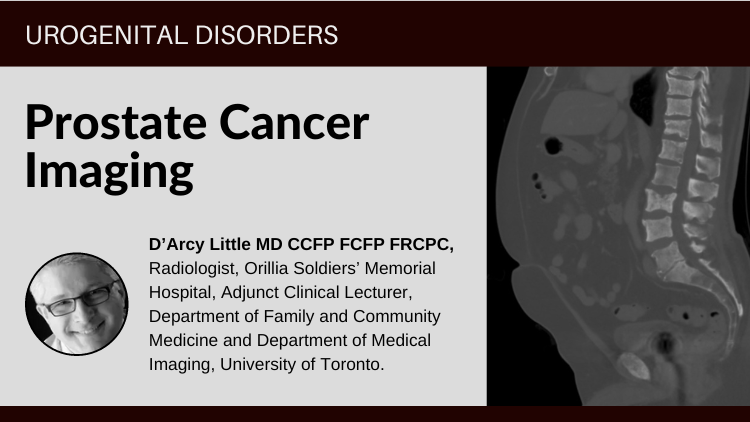Editors: Kantoff P.W., Carroll P.R., D'Amico A.V.
Lippincott Williams & Wilkins, 2001.
Reviewed by: Shabbir M.H. Alibhai, MD, MSc, FRCP(C), Senior Editor, Geriatrics & Aging.
Prostate cancer has been enjoying significant attention in the media over the past few years. Famous individuals such as Health Minister Allan Rock and General Schwartzkopf have been diagnosed and treated in recent years. Much information has been published, in an increasingly compartmentalised and specialised fashion, on the subject in the past decade. This textbook's purpose is to bring together the data from basic science and clinical disciplines in a comprehensive examination of prostate cancer. I should mention at the outset that I have significant research interests in this field, particularly from the geriatric angle, so my perspective on this book may be a little slanted.
To begin with, this reference is written by a host of distinguished American genitourinary oncologists. With very few exceptions, the list of contributors includes the major researchers in the field. Unfortunately, of approximately 100 authors, only two are not American. Thus, a wealth of international (and Canadian) experience in prostate cancer is ignored, and a primarily American perspective on this disease is presented. While this may not be an issue in some fields, in prostate cancer there are significant international differences in thinking with respect to screening, diagnosis and treatment.
The book is organised into eight sections, covering biology, epidemiology, diagnosis, early prostate cancer treatment (two sections), advanced disease (two sections) and future directions. Chapters are generally organised logically, and text and tables are nicely formatted and easy to read. Some chapters have many tables and figures to help facilitate knowledge transfer, whereas others are monotonous and almost exclusively text-based.
The section on biology has some very useful material on anatomy, cellular and molecular biology, genetics and cancer prevention. The anatomy chapter would have been aided by a few diagrams illustrating the anatomy of the prostate in relation to surrounding structures; pity the authors presumed the readers would not find this information useful.
The section on epidemiology is quite interesting. An excellent review of nutritional factors by a world authority includes pertinent sections on vitamins D and E, lycopenes, soy and selenium. However, there is no mention of the ongoing, large SELECT (selenium and vitamin E) randomised prevention trial sponsored by the National Cancer Institute. Peter Albertsen's chapter on age, comorbidity and prostate cancer is particularly relevant to geriatricians and clinical epidemiology-types, such as myself.
Sections 4 and 5, covering single modality and multimodality treatment of localised disease, will be of particular interest to primary care clinicians. There are some useful chapters discussing the role of surgery, external-beam radiotherapy, brachytherapy and combined therapies. One chapter is dedicated to treatment complications such as incontinence and sexual dysfunction, although neither this chapter nor previous ones adequately discuss the risks of treatment complications by modality and patient characteristics. There is also very little discussion of the prevalence of pre-existing incontinence and erectile dysfunction in older adults. This is unfortunate, because both conditions impact upon treatment selection in practice. Moreover, the discussions around treatment do not, in my mind, distinguish the results achieved in specialised tertiary care centres from the average community setting. I found the material on adjuvant hormonal therapy somewhat sparse, given the number of studies published in this area in recent years. I also found the chapter on quality of life long on the theory of quality of life and how to measure it, and short on the actual quality of life after various treatments and complications. This is unfortunate, given the limited evidence in favour of treatment, particularly in older adults, and the major adverse effects of treatment. This is not adequately highlighted.
Chapters in remaining sections cover other interesting areas, including various complications of prostate cancer (hematologic, orthopedic, neurologic), psychosocial issues and a very comprehensive review of pain and symptom management (something with which many clinicians are not very proficient). From an evidence-based medicine perspective, the offerings vary. Some chapters are very careful to discuss the quality and quantity of evidence, whereas others (particularly the chapters on treatment of localised disease) are more cavalier and present the perspectives of expert clinicians with secondary use of studies to justify their positions. Overall, I was disappointed in the offerings, and there was scant mention of several important completed or ongoing clinical trials of management (e.g., the now-published Scandinavian trial of radical prostatectomy vs. watchful waiting and the ongoing PIVOT trial of surgery vs. watchful waiting).
In summary, this textbook will probably be useful to genitourinary specialists (clinicians and researchers) who want quick overviews of specific topics to inform or facilitate more detailed inquiries. Family physicians and general internists should be able to answer most of their questions equally well with a good urology or oncology textbook or a few good review articles on the subject. A stronger focus on methodology (one very good chapter on clinical trials notwithstanding) and evidence-based recommendations would have been an asset. A chapter on informing and empowering patient decision-making also would have been useful, as would a list of Internet-based resources for clinicians and patients. For the generalist, borrowing a copy from your local medical library and waiting for an improved second edition is probably your best bet.

